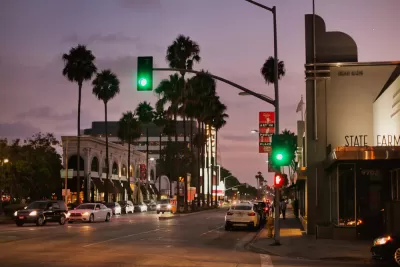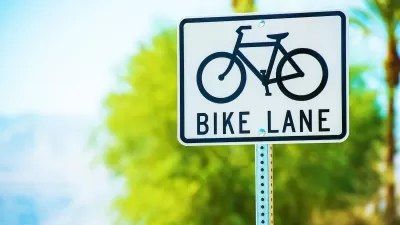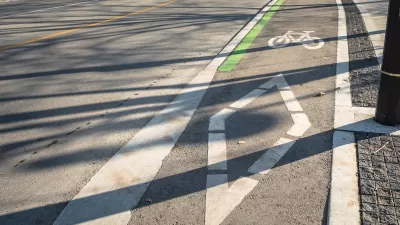The small Los Angeles County city could remove 1.3-miles of protected bike and bus lanes installed during the Covid-19 pandemic.

In an opinion piece in the Los Angeles Times, Yotala Oszkay Febres-Cordero calls on the small city of Culver City, on Los Angeles’ west side, to continue the Move Culver City pilot project, which installed 1.3 miles of protected bike and bus lanes in the city’s downtown.
For Oszkay Febres-Cordero, removing the protected lanes, a move favored by some conservative city council members, would be “a devastating setback, not just for those of us who use the lanes but also for how Angelenos see the future of transportation in our region.”
The op-ed addresses common concerns, such as traffic. “Drivers complain that the bus and bike lanes slow down traffic on the street. But the lanes don’t do so by much: According to the report, during peak afternoon traffic, travel time in a car has increased by a maximum of two minutes compared with a 2019 baseline.”
Protected bus lanes can also address transportation equity. “Many people riding the bus in L.A. County are not doing so on principle or because it’s fun, but because it’s the most viable option for them. A bus lane makes their lives better too.”
Oszkay Febres-Cordero holds city council members responsible for improving transportation for all residents. “Council members are the decision makers. If bus service is not up to par to maximize the protected lane, then it is on them to make it better. If the project lacks support, then they need to invest in the service frequency, reliability and connectivity to strengthen the ridership and thus the buy-in.”
FULL STORY: Opinion: Cars don’t have to rule Culver City, or the future of L.A. transit

Study: Maui’s Plan to Convert Vacation Rentals to Long-Term Housing Could Cause Nearly $1 Billion Economic Loss
The plan would reduce visitor accommodation by 25,% resulting in 1,900 jobs lost.

North Texas Transit Leaders Tout Benefits of TOD for Growing Region
At a summit focused on transit-oriented development, policymakers discussed how North Texas’ expanded light rail system can serve as a tool for economic growth.

Why Should We Subsidize Public Transportation?
Many public transit agencies face financial stress due to rising costs, declining fare revenue, and declining subsidies. Transit advocates must provide a strong business case for increasing public transit funding.

How to Make US Trains Faster
Changes to boarding platforms and a switch to electric trains could improve U.S. passenger rail service without the added cost of high-speed rail.

Columbia’s Revitalized ‘Loop’ Is a Hub for Local Entrepreneurs
A focus on small businesses is helping a commercial corridor in Columbia, Missouri thrive.

Invasive Insect Threatens Minnesota’s Ash Forests
The Emerald Ash Borer is a rapidly spreading invasive pest threatening Minnesota’s ash trees, and homeowners are encouraged to plant diverse replacement species, avoid moving ash firewood, and monitor for signs of infestation.
Urban Design for Planners 1: Software Tools
This six-course series explores essential urban design concepts using open source software and equips planners with the tools they need to participate fully in the urban design process.
Planning for Universal Design
Learn the tools for implementing Universal Design in planning regulations.
Ascent Environmental
Borough of Carlisle
Institute for Housing and Urban Development Studies (IHS)
City of Grandview
Harvard GSD Executive Education
Toledo-Lucas County Plan Commissions
Salt Lake City
NYU Wagner Graduate School of Public Service




























